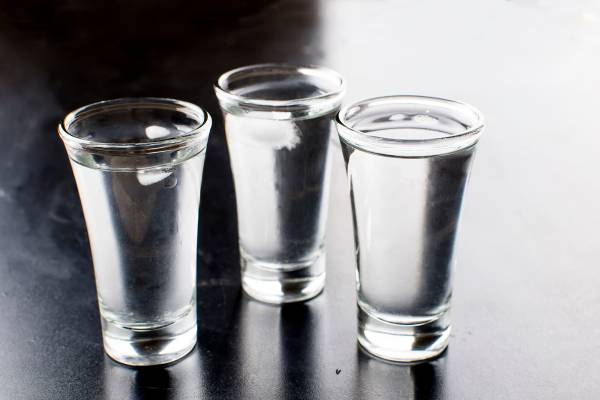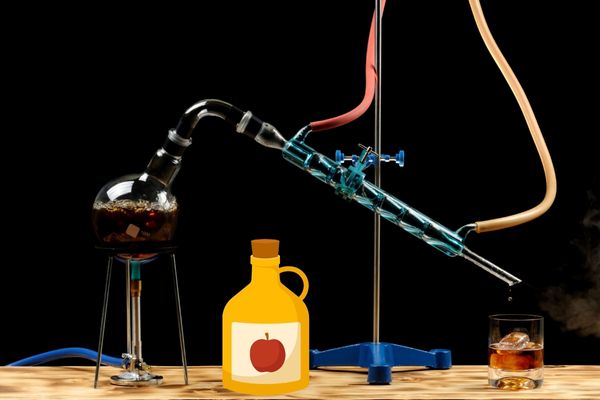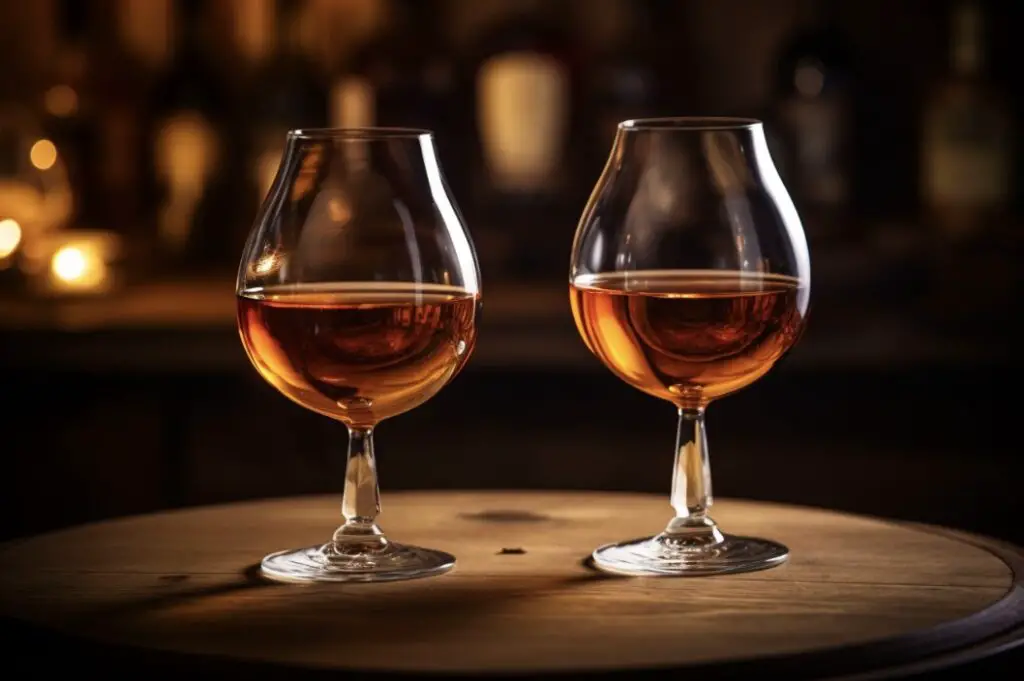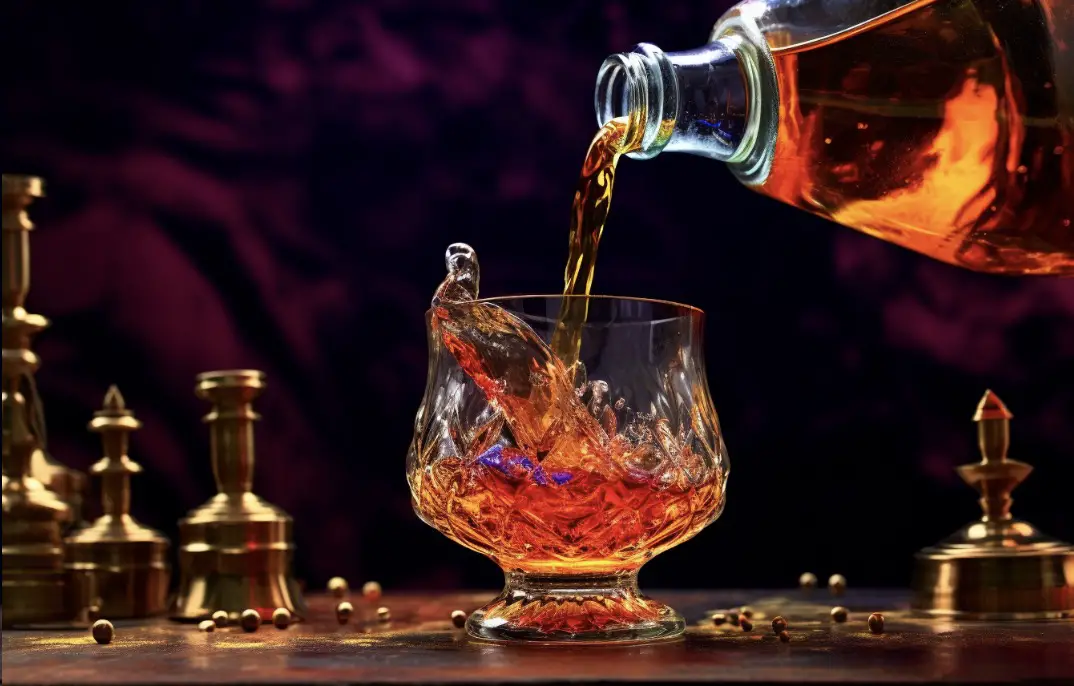What proof is moonshine usually? Moonshine, or “white lightning,” typically ranges between 120 and 190 proof.
This translates to an alcohol content of 60% to 95% by volume. However, the proof of moonshine can vary depending on the distillation process, recipe, and ingredients used. In this blog post, we’ll explore the factors that determine the proof of moonshine, how it’s made, the history behind it, and its legal status today.
What does Proof Mean for Moonshine?
In the context of moonshine, the term “proof” refers to the measurement of the alcohol content or strength of the moonshine. It is a way to express the alcohol content as a percentage by volume. The proof is typically twice the alcohol by volume (ABV) percentage.
Historically, the term “proof” originated from a method used to determine the alcohol content in distilled spirits.

It involved soaking gunpowder with the spirit and attempting to ignite it. If the gunpowder ignited, it was considered “proof” that the alcohol content was high enough to support combustion. The term “proof” became associated with the strength of alcoholic beverages and has been used to measure alcohol content ever since.
For example, if a moonshine is labeled as 100 proof, it means that the alcohol content is 50% ABV.
Similarly, 80 proof moonshine would contain 40% ABV. The proof provides a standardized way to communicate the strength of the moonshine and allows consumers to make informed decisions about the potency of the spirit.
The Moonshine Distillation Process
The Basics of Distillation
Moonshine is produced through a process called distillation. Distillation involves heating a liquid mixture and collecting the vapors, which are then cooled and condensed back into a liquid state. This process separates the alcohol from other components in the liquid, such as water and impurities.

When making moonshine, the distillation process is typically done in a pot still. A pot still is a simple, closed container with a pipe that connects to a condenser, where the vapors are cooled and collected as liquid. The more times the liquid is distilled, the higher the alcohol content becomes.
Controlling the Proof of Moonshine
The proof of moonshine is determined by several factors, including the fermentation process, distillation method, and even the type of still used.
1. Fermentation: The initial alcohol content of the liquid mixture, or “mash,” is determined by the fermentation process. Fermentation occurs when yeast consumes sugar and produces alcohol. The type of yeast used, the sugar content of the mash, and the fermentation time all play a role in determining the initial alcohol content.
2. Distillation: The number of times the liquid is distilled also affects the proof of moonshine. Each time the liquid is distilled, the alcohol content increases. However, it’s important to note that distilling the liquid too many times can result in a loss of flavor.
3. Type of still: The type of still used for distillation can also impact the proof of moonshine. A pot still, which is more traditional and less efficient, will produce a lower proof moonshine compared to a reflux still, which is more modern and efficient in separating alcohol from other components.
Moonshine Recipes and Ingredients affect final proof
Traditional Corn Mash
The most traditional moonshine recipe is a corn mash made with cornmeal, sugar, water, and yeast. This recipe typically produces a moonshine with a proof of around 120 to 150. The proof can be increased by adding additional sugar to the mash or by using a higher alcohol-tolerant yeast during fermentation.
Fruit-Based Moonshine
Moonshine can also be made using fruit, such as apples, peaches, or cherries. These recipes often require a sugar source, like added sugar or fruit juice, to create a fermentable mash. Fruit-based moonshines can have a wide range of proofs, depending on the amount of sugar and the type of yeast used.
The History of Moonshine
Moonshine has a long and storied history in the United States. It became popular during the Prohibition Era (1920-1933), when the production and sale of alcohol were illegal. Many people began producing moonshine in secret, using homemade stills and improvised recipes.

The term “moonshine” comes from the practice of distilling alcohol at night, under the cover of darkness. This was done to avoid detection by law enforcement. Moonshiners often operated in remote locations or hidden rooms, making it difficult for authorities to locate their illegal operations.
The Legal Status of Moonshine Today
In the United States, it is currently illegal to produce distilled spirits at home without a federal license. This includes moonshine.
However, the sale of legal moonshine has become increasingly popular in recent years, with many distilleries now producing and selling their own versions of this high-proof spirit.
It’s important to note that producing moonshine at home can be dangerous, as improper distillation can result in the production of toxic substances like methanol. It is always recommended to purchase moonshine from licensed distilleries for safety reasons.
Conclusion
In conclusion, moonshine typically ranges between 120 and 190 proof. The proof of moonshine is determined by factors such as the fermentation process, distillation method, and the type of still used. Moonshine has a rich history in the United States, particularly during the Prohibition Era.
Today, it is illegal to produce moonshine at home without proper licensing, but there are many legal options available for those looking to enjoy this high-proof spirit.
10 Facts About Moonshine:
1. Moonshine typically ranges between 120 and 190 proof.
2. It is made through a process called distillation.
3. The most traditional moonshine recipe is a corn mash.
4. Moonshine can also be made using fruit.
5. The proof of moonshine is determined by factors such as the fermentation process, distillation method, and type of still.
6. Moonshine became popular in the United States during the Prohibition Era.
7. The term “moonshine” comes from the practice of distilling alcohol at night, under the cover of darkness.
8. It is currently illegal to produce moonshine at home without proper licensing.
9. Producing moonshine at home can be dangerous due to the risk of producing toxic substances like methanol.
10. Legal moonshine is available for purchase from licensed distilleries.
FAQs
Is 200 proof moonshine possible?
Yes, 200 proof moonshine is possible. Moonshine typically refers to illegally produced distilled alcohol, and 200 proof is the maximum level of alcohol purity achievable through distillation. At this level, the alcohol is 100% pure, containing no water or other impurities. However, it is important to note that consuming such high-proof alcohol can be extremely dangerous and potentially fatal.
What is the ideal proof for moonshine?
The ideal proof for moonshine would involve establishing a deep mathematical connection between the theory of modular forms and the representation theory of finite groups, particularly the Monster group. This would involve demonstrating the existence of a natural correspondence between the modular functions and the irreducible representations of the Monster group, thereby providing a comprehensive understanding of the mysterious connections between these seemingly unrelated areas of mathematics.
Is 40 proof strong?
Yes, 40 proof is considered strong. It means that the alcoholic beverage contains 20% alcohol by volume.
What alcohol is 40% proof?
A beverage that is 40% proof is typically a spirit or liquor, such as vodka, rum, whiskey, or gin.
Is 40 proof moonshine strong?
Yes, 40 proof moonshine is relatively strong. It means that the moonshine contains 20% alcohol by volume. While it may not be as potent as higher proof moonshine, it still has a considerable alcohol content and should be consumed responsibly.
Can you distill 200 proof alcohol?
Yes, it is possible to distill 200 proof alcohol. Distillation is a process that involves heating a liquid to create vapor and then cooling the vapor to collect the desired substance. In the case of alcohol, distillation can be used to increase its purity and strength. 200 proof alcohol refers to the highest concentration of alcohol, which is 100% ethanol. Through proper distillation techniques, it is possible to achieve this level of purity.




